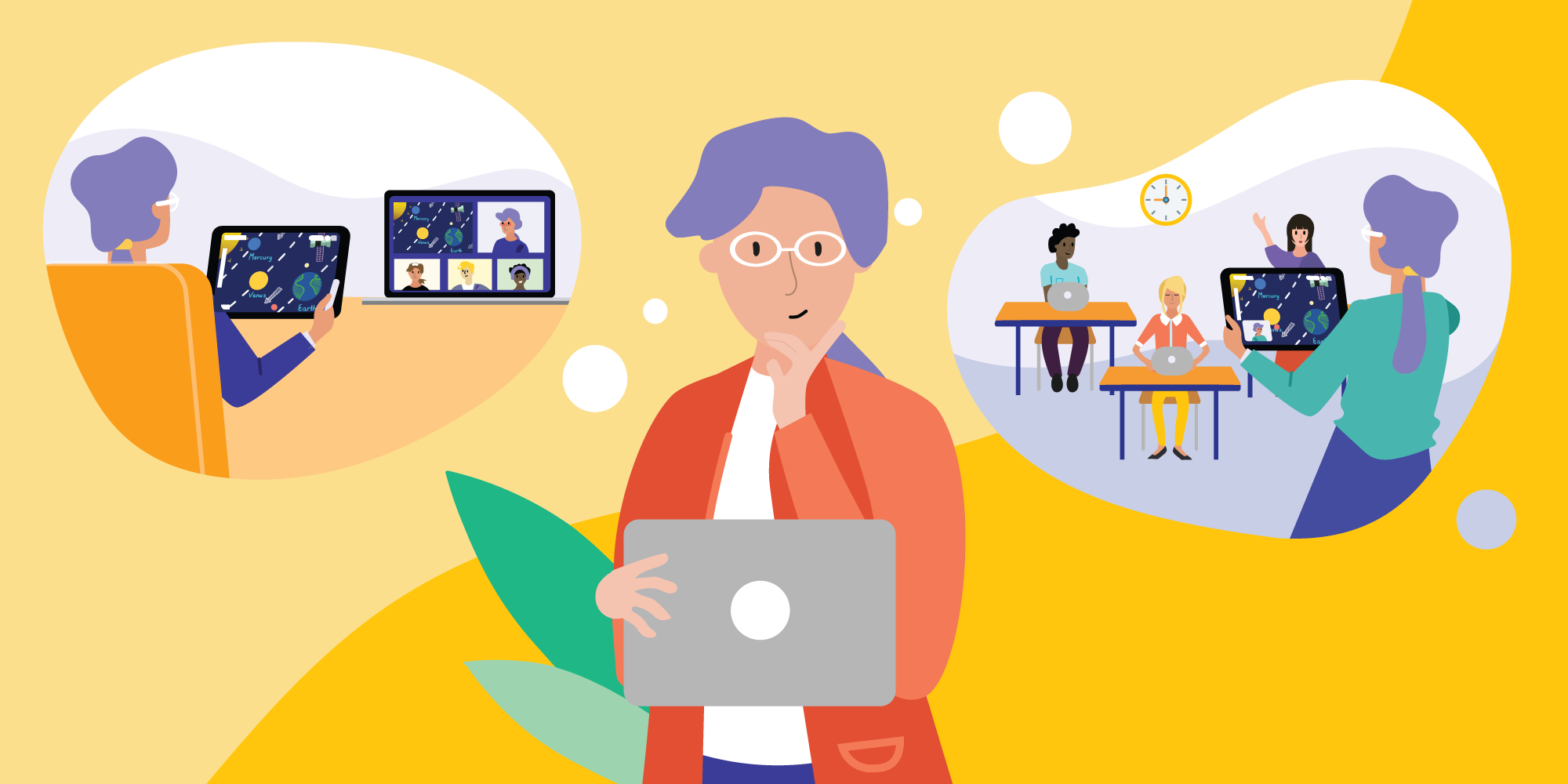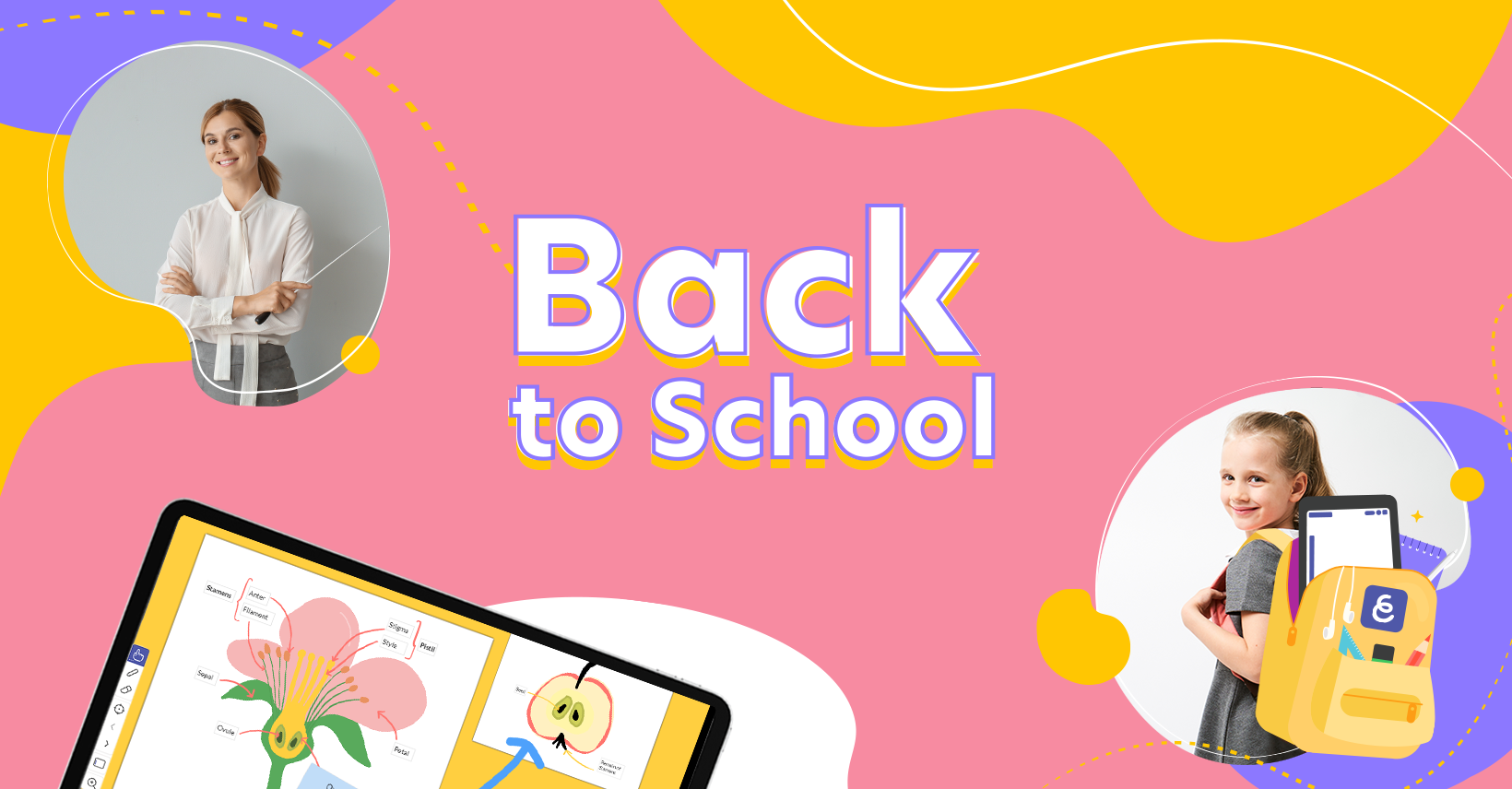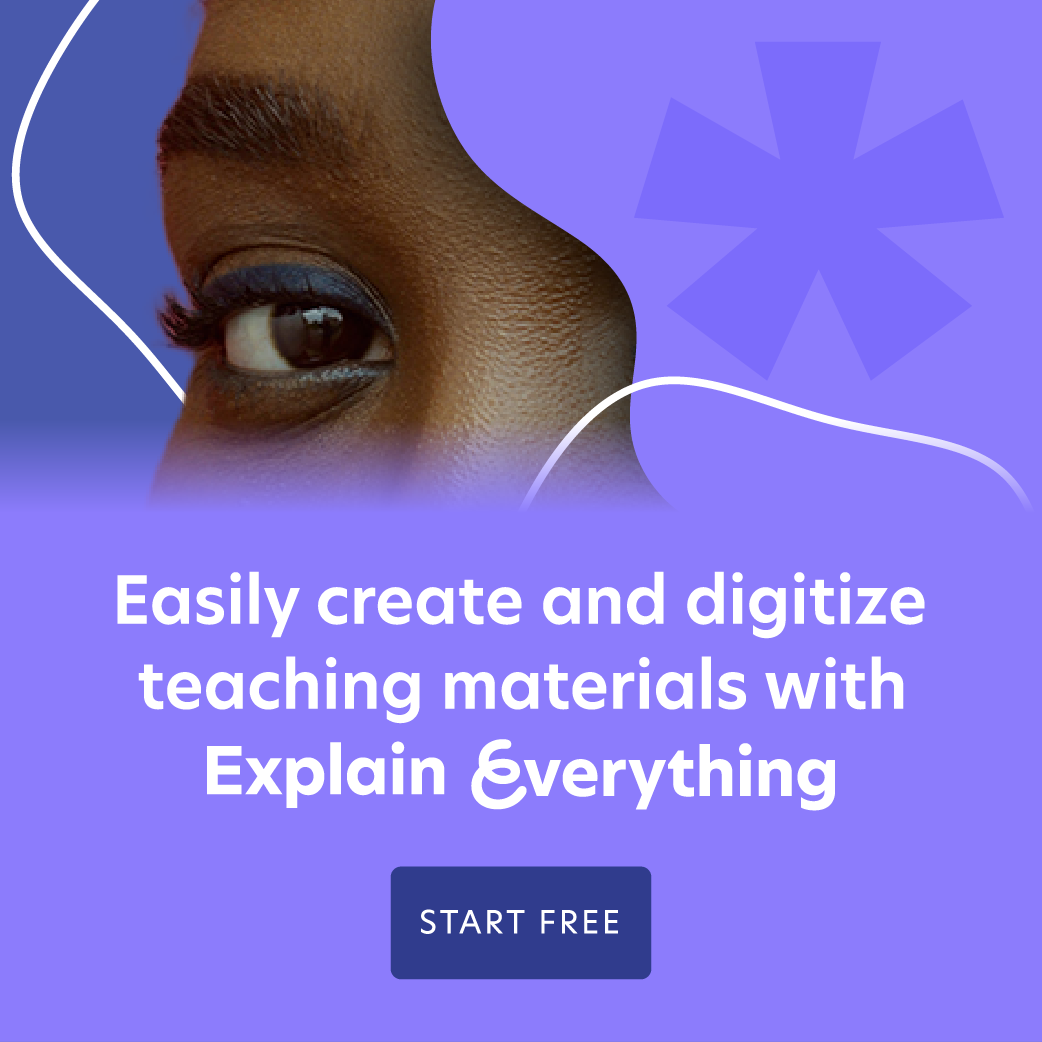Back to School teaching scenarios – be prepared for hybrid learning

Table of Contents
In most countries, it’s about time to return to school, but are things going to go the way they would have pre-2020? It seems that most governments have decided to take the risk of getting back to (some version of) normal. Remote teaching’s impact on the state of education, along with the appropriate health protection measures, will determine what that version of normal will be, with vaccination progress and hopes for avoiding another wave playing roles, too. That’s a lot of variables, and sometimes it seems like we can’t be sure of anything these days. And that’s why it’s better to be prepared for any teaching model.
With many children missing school (due to health concerns, a lack of vaccination, or personal parental decisions) a number of lessons – and possibly even most of them – will have to take place in the hybrid teaching model, even though schools will remain open.
But keep your heads up, you already have plenty of experience, knowledge and the right tools to get through this smoothly! Educational technology has proven its worth when it comes to hybrid and remote learning – and you can keep on learning how to take advantage of all it has to offer, upping your skills along the way.
The most important thing is that you all – both teachers and students – stay safe and take care of your health.
Here are some strategies, along with useful resources, that you can incorporate into your Back to School activities:
- Prepare workflows for both remote and hybrid teaching models
- Find a way to engage students in a hybrid teaching scenario
- Learn your equipment and school systems and then adapt them to your students’ level and skills
- Stay updated, take breaks, take care of yourself and stay safe
- Resources base you may find helpful in the new school year
#FLEXIBILITY: Be prepared for hybrid and remote learning
Easier said than done, but the truth is that it’s no longer as hard as it was back in the 1st quarter of 2020. And now you can take advantage of all the experience and knowledge we have globally collected since then, too.
So what’s there to focus on?
Prepare your lessons in a model that can be used either for face-to-face classes, online teaching, or better yet – the hybrid model that combines both scenarios. How can you do this? Here are some tips:
- Create the kind of lessons that can be engaging whether you’re in the classroom in front of your students or presenting online. This means using digital materials that you can easily screen share both to students online and in-class using a monitor or a whiteboard/wall if your students don’t use their own devices when at school.
- Use the right tool to store and present your lessons no matter the distance. Instead of having a pile of books and documents, you can collect the digital versions of all of your favorite resources (as PDF files, or even by taking pictures of the papers that cover a lesson topic).
- Use a collaborative whiteboard to connect with everyone, no matter whether a class is hybrid or remote. A shared and editable space is perfect for engaging with students, giving feedback, and working together on assignments.
- Find the best way to give digital homework and feedback – even if you’re back to brick and mortar school, there might always still be children that for some reason have to stay at home and learn online.
Did you know? All the above can be done with a digital whiteboard like Explain Everything – find out how it can help in any teaching model.

#READINESS: Prepare for a scenario where you will have to engage students online
Even if you yourself are in a physical classroom most of the time, you will probably have some students learning remotely. This is why it’s worth thinking of ways to teach your pack in-class and online at the same time. At least for now, hybrid learning seems to be the future of education.
How can you engage your students even if they’re not all physically with you in the classroom? Here are some tips:
- Blended learning is your friend, and it’s all about the right set up. You won’t need anything special, really, but there are some key tools you will need to become a classroom vlogger of sorts. Live-recording your lessons can help you not only teach your students in a hybrid model, but also create an entire library of reusable materials that can be shared with anyone later on. Staying present for those in your class that had to stay at home is crucial to engaging them.
- Incorporate a flipped classroom model into your hybrid teaching! You must have a lot of amazing materials you could send over to your students for them to read or watch at home. Answering any questions that may have come up during class time and then collaborating to solve problems together is sure to be both encouraging and engaging. You can use a collaborative whiteboard to work together both in online teaching and in the classroom!
Take a look at this example of collaborating in real time:
#TECH-KNOWLEDGE: Know your options – what technology can you use for your hybrid classes?
What’s crucial in the 2021 Back to School season is to do your best to cooperate with your school administrators and IT department, as well as with parents and students. This may sound like a lot, but without communication it will be hard to figure out what you can actually, realistically do, much less effectively teach all of your students at the same, or at least a comparable level.
What’s important?
- Learn your school management system well – ask for help if you’re not sure which apps and tools work with it best, and practice a lot!
- If you’re not sure what equipment your students have, create a simple survey for parents. Maximize your knowledge about the minimum requirements for teaching the best classes you can. Is that just a computer connected to the internet, or do you need your students to have more?
- Remember that you do not need a lot – it’s ok if you have a standard setup (that is, a computer with a camera and microphone) but it’s best to have a second screen and a tablet, too. If you’re up for recording your lessons, which is great in a hybrid learning scenario, the simplest tripod for your phone should be enough.
- Get some help! You’re not alone. Search the Internet for useful tips and instructions, but most importantly: don’t hesitate to ask your IT-savvy friends to help you figure out how to get ready.
- Limit the number of tools and apps you use for better efficiency. You really don’t have to start on a high note. Choose how you want to build your lessons and find out which apps you need to make your vision a reality. If you want to present your knowledge the traditional way, this might mean that all you need is an online whiteboard. Find out about the best teaching tools (for different activities) here.
Did you know? An online whiteboard such as Explain Everything allows you to not only present your knowledge to a mixed audience (in the hybrid learning scenario), but also to have a collaborative space for live teamwork, or even record entire presentations to add to your library of educational materials.
Want to start learning it? Here’s a step-by-step guide to teaching with a whiteboard:
#SELFCARE: Keep up with the (right) news and take care of yourself
Observe your school’s health policies. Wearing a mask for the whole day may not be any fun, but it’s necessary. And if your government or your school provides teachers with any extra support like a mental health care program or technical guidelines and pedagogical resources, use it! You are a hero, but you’re still a human, too, and you need to rest and relax every now and again. Try to remember that if you’re not feeling well, you won’t be able to help anyone else, either. You matter, and you deserve a break now and again.
How can you take care of yourself?
- Don’t push yourself too hard. Take it slow, and even if you don’t observe a lot of success right away, remember that just being there for your children and making an effort is a success in and of itself.
- Staying well-informed can offer a feeling of relief from the chaos, so try to keep up with the news…just make sure your sources aren’t fake or emotion-based. Rely on your official government news outlets to make sure you know your situation.
- Watch your daily consumption of information and screen time. Limit social media channels that make you feel angry, sad, frustrated or hopeless.
- Talk to friends and other teachers about your experiences or doubts – it’s important to find a community that can be supportive and shares similar interests.
- Try to move your body a bit every now and then. A 30-minute walk in the park can be enough to supply your body and brain with the endorphins they need.
Check out this quality selection of resources about teachers’ selfcare.
#LEARN: Helpful resources and knowledge base for back to school 2021
Hungry to learn more? Take a look at this list of useful resources and knowledge-share spaces:
- For the most recent pandemic data, go to the Johns Hopkins University site.
- For a collection of Back to School teaching resources to support you in your classroom for the start of 2021 go to this Techstarter site.
- To join a Global Educator Collective Group on Facebook with a lot of helpful insights go to this link: https://www.facebook.com/groups/1584726155013357.
- For a useful selection of edtech bloggers go to this blogpost.
- Check out this Learning Forward Association for a selection of supporting materials.
- For a resource library that supporst teachers during Covid-19 pandemic take a look here.

